Being on lockdown can be a frustrating situation. It’s not ideal for anyone. However, you don't have to put your dreams on hold. Now more than ever you have everything you need at the palm of your hand. You can learn whatever you want from the comfort of your sofa. Take advantage of this quarantine and expand your curriculum by learning a new language.
Find a French teacher
You need an online learning platform if you want to learn once and for all a new language. Among the many initiatives available, Classgap is one of the best ones for multiple reasons. It is a platform that serves as a bridge between teachers and students. Classgap connects them and arranges online lessons. It also provides a virtual classroom with all the tools they may need for an amazing learning experience.
Before starting a French online class, however, there are some previous steps you need to take if you want to have the best lesson possible. The first step is to find out what your language level is. Find out now with our French online test. It takes only 10 minutes. Start learning as soon as possible.
Take the French test and check your language level
The second step is to choose the right French online teacher. One that knows and adapts the lessons to your needs. But how do we make this decision?
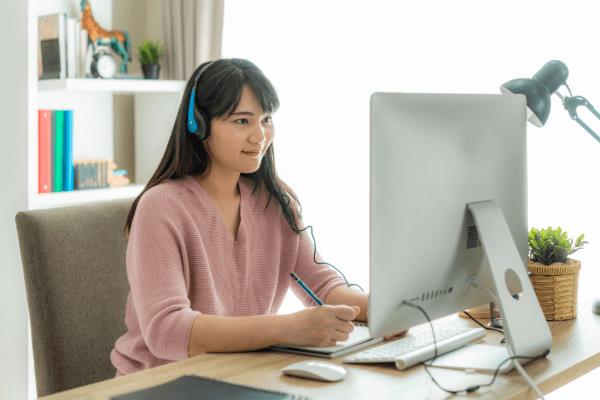
How to choose a French online teacher
This is a crucial step. It’s important to choose the right teacher. Classgap has a wide range of teachers for all types of students. And among these teachers, most of them meet the basic requirements to be a very good French teacher. Nevertheless, don’t forget that it’s important to have chemistry and common ground with your tutor.
The free 15-minute trial can be of help when you need to make the final decision. You should write questions down and solve all your doubts during the interview. Find out if they meet your requirements.
Besides, there’s still yet a last decision to make. Classgap has two types of teachers: natives or bilinguals.
- Natives: native teachers have extensive knowledge of the French language. They know typical expressions and more street vocabulary. Being native doesn’t necessarily mean more control on the language than a bilingual. However, they are more aware of the slang, colloquialisms, and linguistic contexts. In basics levels, it doesn’t make a big difference. It’s for the more advanced students that the benefits of a native teacher may pay off in the long run.
- Bilinguals: a bilingual teacher may have an advantage that the natives don’t. They’ve also been French students in the past. They are more aware of the different obstacles a student faces learning a language. As a result, their lessons tend to focus on difficult concepts through a more empathetic approach. It’s the best choice if you are only starting to learn the language.
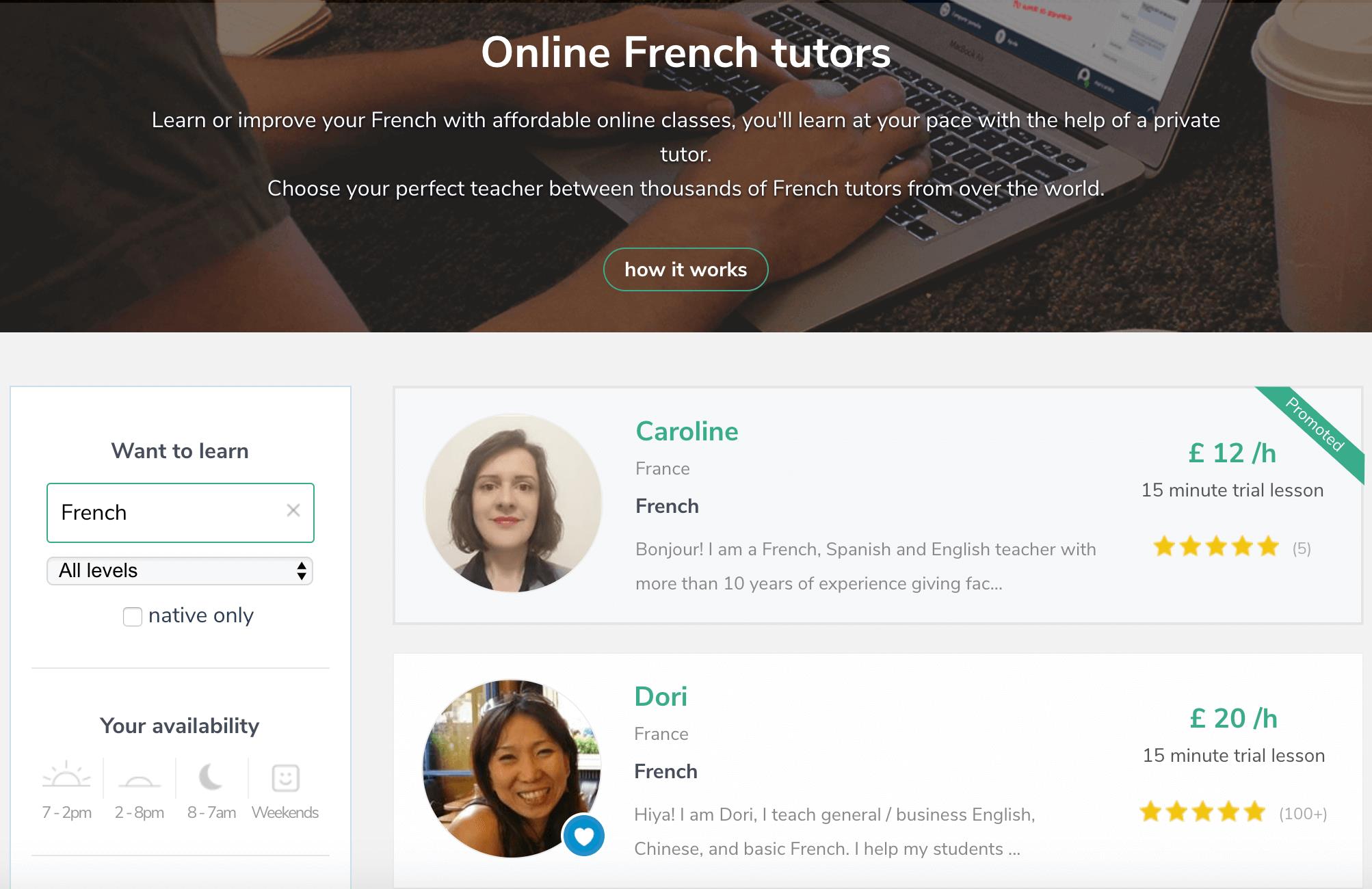
If the teacher has a passion for teaching the differences are barely noticeable. However, it can be helpful to know for those more advanced students. As you make progress, you need to reevaluate what each kind of teacher can provide.
Choose a native French teacher to start learning now
At last, once you’ve met the perfect French teacher you need to check for prices, previous experience, and availability. This information is in the tutor’s profile among other relevant data you may need.
How to take an online French class
You have made a choice. Well done. This was the most important step. Now it’s time to start your first class in a virtual environment. And for most of you, this way of learning will be new and strange at the beginning. With time and patience, you will soon discover that virtual tools are just as useful as the ones you can find in a conventional classroom.
What’s the next step? You need to enter the virtual classroom at the time and hour agreed with the tutor. To do that you only have to access “My classrooms”. If all goes according to plan, you will have access to the virtual classroom where your teacher will be waiting for you. This is the place where the French lesson will take place.
This virtual classroom is equipped with all the tools you need to learn French. And although it is enabled to teach all kinds of subjects, language learning is the most complete of all.
Share and create files
The most used tool in language learning is the option to add/upload or create documents. Usually, the lessons will start with some notes about grammatical structures or vocabulary. In the virtual classroom, the teacher can upload documents or PowerPoint presentations to make the classes more visual, or they can write the concepts as the lesson progresses. It is up to both of you to decide what you want to do.
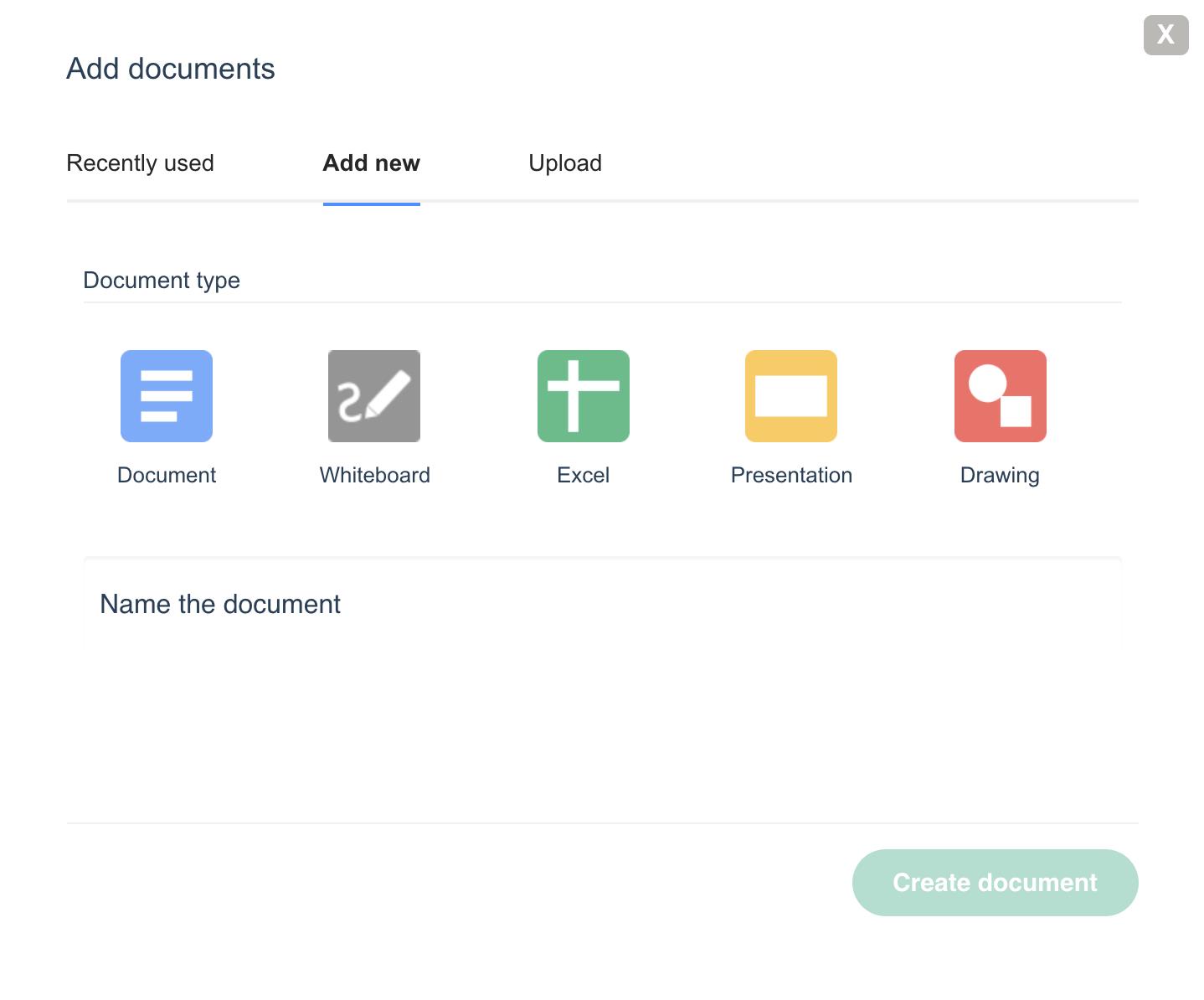
This option also opens the possibility that the teacher puts exercises to test your abilities. You can work with them during the lesson or in your free time. The teacher can share a document and you only need to download it when the class finishes. This type of “homework” will help the teacher track your progress.
And last but not least, the teacher (but also the student) can share videos or audio files. The first content can be very useful to complement the lesson with a more entertaining way of learning. The audio files are key to practice the listening skills or the pronunciation.
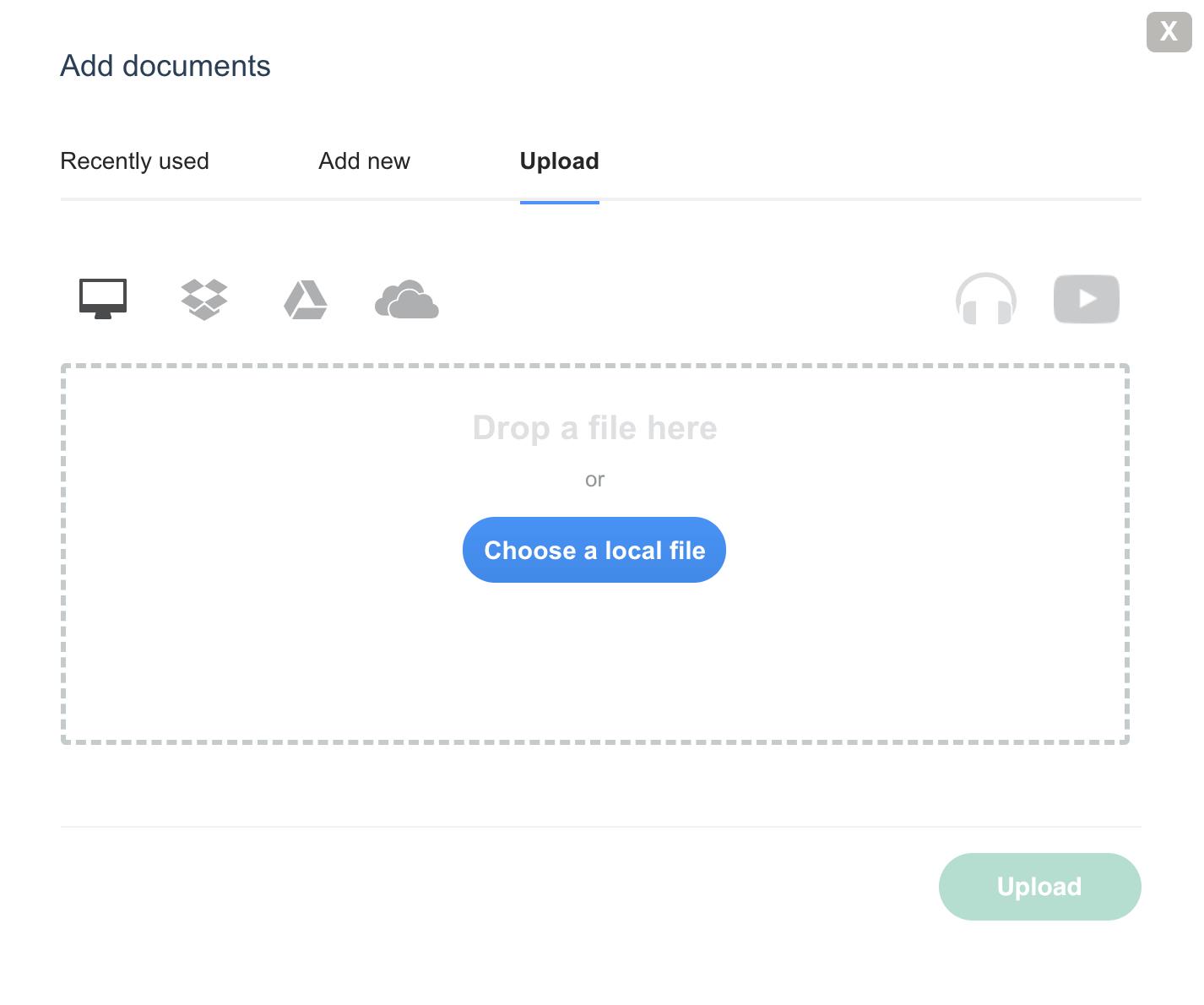
Share screen
In the virtual classroom, you can also share the screen. It can be a very useful tool if you want to access online resources like games, official exams samples, etc. There are infinite possibilities and it can make the lessons much more versatile.
Just video
The virtual classroom has three different views to work with. The default option is the most complete one. However, you can also find the options of "work with the audio" or "just video". The latter allows you to see your teacher and nothing else.
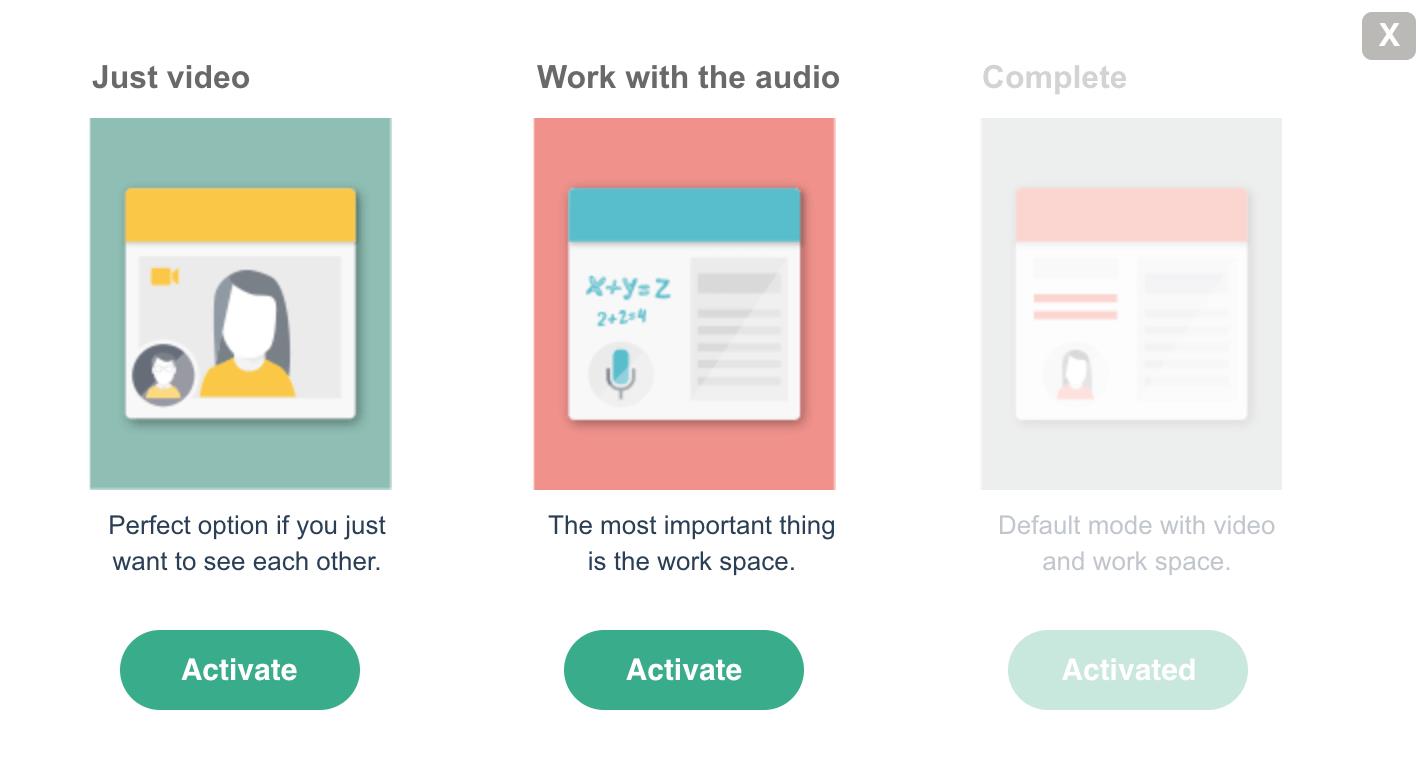
Why is this view so important? If you are learning a language, you should have some time in every lesson to practice all the skills. In a virtual classroom, the option of just video allows for better speaking practice. It feels more personal if you can see the person you are talking to.
Whiteboard
For your French class, you have also a whiteboard. It can be useful from time to time. In this case, the teacher can use it to explain certain topics such as the phonetics of some words or some spellings. It's not an essential tool for the class but it's good to know it exists.
What happens when your class is finished?
You’ve finished the lesson. Hopefully you enjoyed both the teacher and the virtual classroom. But now what? Is that all? Not yet. Before clicking on the option to end class, you should download the files used during the lesson. If you want to keep working with this teacher, you should also schedule another lesson.
Once you leave the virtual classroom, an option to rate your teacher pops up. Even though it’s optional, you should review your experience. A good or a bad rating can help the teacher or other students know the efficacy of their learning method.
The last step is to check your progress. If you’ve set a personal goal on the platform, your French teacher will probably track your advances. In the case that they don’t see an improvement, they can make suggestions as to how you can change the situation.
What are you waiting for? Start now.





